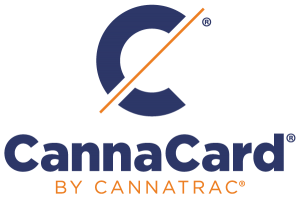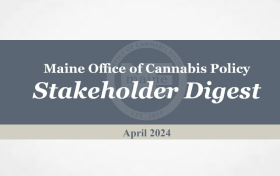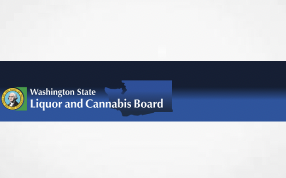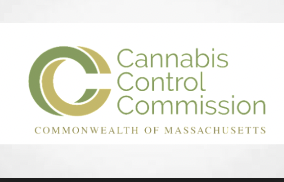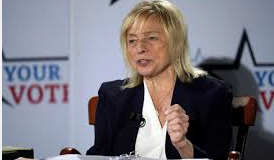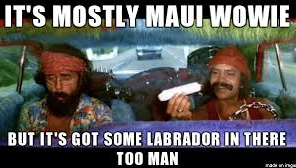If you wish to re-publish this story please do so with following accreditation
AUTHOR: Heather Allman
PUBLISHER: CANNABIS LAW REPORT
Interview with Tom Gavin, CEO of CannaTrac: Cannabis Cashless Payment Solution
COVID-19 has transformed cannabis and the metamorphosis is spectacular. Cannabis evolved. Quickly. Not only have the majority of cannabis companies started thinking outside the box, but they have also constructed a better box along the way.
Our current COVID-19 pandemic has created essential cannabis, but it has also served to accelerate medical cannabis patient interface innovation and increase cannabis product supply and inventory— all while adapting to the crisis.
In his insightful April 13, 2020 article How the coronavirus crisis is reshaping the cannabis industry for the long term, Adam Schaneman discusses the issue at length:
“As the market moves through this crisis, consumers’ purchasing habits are changing, including the method they use to buy cannabis products. Online ordering, delivery, curbside pickup and drive-thru lanes are likely here to stay as customers recognize their ease of use.”
After first clarifying the need for cannabis throughout the complex patchwork of state laws, the cannabis industry proceeded to excel at anticipating patient and consumer needs and meeting them.
The vast majority of cannabis companies promptly and effectively improved online ordering across the board. In turn, the industry’s main cannabis players are meeting increasing patient demand with expedited seed-to-sale supply and stocked inventory.
As the pandemic ramped up across the states in mid-March, a marked change occurred in cannabis consumer buying habits.
Now more than ever, buyer behavior is driving the current cannabis market.
According to CannaTrac, “The pandemic has shifted the way things are done in the cannabis industry, shown its legitimacy and brought new cannabis purchasing options to consumers.”
INTRODUCTION TO CANNATRAC
In just a few short months:
Cannabis has been deemed an ‘essential’ business in 20 states, and 24 states have begun permitting customers to pick up marijuana purchases curbside.
Cashless payments, including in the cannabis industry, have surged in popularity and 60% of U.S.consumers plan to continue using digital/touchless payments after
COVID-19
According to a late July 2020 article by Finance Magnates,
“The COVID-19 pandemic paradigm shift will have a lasting effect on the fintech sphere. Greater engagement with fintech companies on a business-to-customer (b2c) level seems to also have been reflected on a business-to-business (b2b) level in the fintech space, particularly when it comes to companies that have unique payments needs.
The trend away from cash payments isn’t just a trend in the cannabis industry; however, in fact, the trend away from cash was already underway when the pandemic began. Still, COVID does seem to have had a profoundly accelerating effect.”
- But, how will the convenient options offered to cannabis consumers during the pandemic affect their preferences moving forward?
- Will cannabis retail purchasing ever look like it did pre-pandemic or has it changed forever?
- Do cannabis retailers now need to offer curbside pickup, delivery and cashless payment options to succeed?
On October 1, 2020, I talked to Tom Gavin, CEO of the CannaTrac cannabis cashless payment solution. Here are his thoughts on everything from core values to innovation, and beyond.
Cannabis Law Report: Tell me about your year to date at CannaTrac, expanding on your place in the cannabis landscape?
Tom Gavin: There is no denying that the COVID-19 pandemic has been transformative for the cashless payments industry. As consumers do their best to avoid touching cash, they are much more open to mobile payments than ever before.
In an August 2020 study by Rapyd, 54 percent of consumers surveyed are concerned about handling paper money and coins as a result of COVID-19, and 60 percent of consumers plan on using digital and/or touchless payments instead of cash or coins in the future because of COVID.
When we look at the cannabis industry, this desire to convert over to touchless payments will be the future. The demand we are seeing from businesses to adopt our cashless payments system is higher than ever as businesses prepare for this ‘future of payments.’
We just announced that our CannaCard has been added to tens of thousands of retailers across the country looking to do just that and the cannabis industry is no different.
CLR: What is the mission and vision behind CannaTrac? How aligns with your personal mission?
TG: Founder, Terry Patton, felt that there was a void in the system; without proper access to banking and technology, these businesses couldn’t flourish in a safe and affordable manner. After many years of R&D, he incorporated in 2014 and began to assemble a team.
I was lucky enough to be introduced to the vision and connected with his mission of creating a fair and safe environment for these businesses, their patrons, and the communities they reside.
Obviously, every for-profit company must do just that – make money. However, a company should also have standards. CannaTrac is run using solid ethical standards.
Throughout my career, I have always put others first. CannaTrac has put policies and fail-safes in place to make sure our clients, our consumer base, and the communities our clients conduct business in are safe and top-of-mind.
CLR: What was your intention introducing cashless payments into the space?
TG: CannaTrac was built to bring transparency to financial institutions which in turn would allow for more options for legal cannabis retailers to bank monies and increase safety for consumers and the communities these businesses are located.
CLR: Mainly, there are people-centric or profit-centric reasons for launching anything new. How do you reconcile the two in order to maintain a balance?
TG: It’s never easy when you try to stand your own moral and ethical ground, and still have obligations to provide multiple sets of results to different groups of people simultaneously. In our case, we were lucky enough to have a visionary for a founder. Mr. Patton based this company around an unfilled necessity, which will be very profitable, and that makes a shareholder happy.
He also realized that there was a serious deficiency in the safety of this industry, its patrons, and the general public. CannaTrac understands the need for being people-centric.
Our mission is obviously to make our shareholders money, but in order to do that we have to deliver a superior product which we do and it just so happens that our superior product helps forward our mission of safety.”
CLR: Something people don’t realize about creating and launching a new product in an established company?
TG: While we launched the CannaCard at the same time as the company, we recently established our newest merchant processing solutions subsidiary, CTI Processing. It was significantly easier to launch CTI Processing as an established company than it was starting from the ground with CannaCard.
Once you’re an established company, you have more resources at your fingertips, you understand more about budgeting and planning and, ideally, you have a talented team already in place as we did.
CLR: Tell me about and explain to me the process of creating a cashless payment system.
TG: To create a successful cashless payment system, you need the right team of talented developers and you must put the consumers’ needs first. Look at the customer demographic, how you can protect their data and make them feel safe using your solution, usability, etc.
Another key component is looking closely at the state and federal regulations in the industry you’re planning to build your system for and be flexible as those regulations are likely to change.
Stay up-to-date on the latest technology, adapt appropriately and watch your competition closely as they are likely to adapt as well. Finally, make sure you build a strong full-service banking partnership as this will be crucial for your operations.
CLR: What is your foremost current goal with this new CannaTrac service?
TG: Currently, CannaTrac is working to cater our CannaCard lifestyle and cashless payment app to provide personalized offerings and in-app suggestions to make each user’s experience as unique to them as we can.
This includes suggesting products at shops they might be visiting base on their past preferences, informing them of local events they might be interested in, and more.
CLR: Generally speaking, what is the biggest challenge in launching a new product line for your brand?
TG: Funding. Funding is always the most important thing to look at when launching a product. Very rarely are the expected timelines and costs 100% accurate and you need to have spare capital to plan for extensions.
You need to have additional budgeting to account for potential pitfalls, how much those pitfalls could add to your overall costs.
CLR: What steps do you currently take to achieve and maintain CannaTrac’s premium reputation?
TG: CannaTrac emphasizes upfront and ongoing due diligence across our platform. We want consumers to know that they can trust retail stores and dispensaries where CannaCard serves as a payment option. We take additional precautions in protecting consumer data and safety and are constantly upgrading our security features to ensure their data remains safe.
Additionally, we have partnered with a few reliable and renowned companies to continue expanding our offerings.
“Positive impact strategies offer a more holistic approach to improving a business’s overall mission. Such policies have quantifiable business benefits and positive social outcomes. But how do you implement a good positive impact strategy? The key is to be authentic.”
CLR: Tell me about the CannaTrac commitment to Corporate Social Responsibility, or CSR, and positive impact.
TG: CannaTrac donates, helps support, and offers assistance to several organizations to help support industry and local community groups that align with our ideals.
A few of the main organizations we donate to include The Last Prisoner Project, the Marijuana Policy Project, the Disabled Patriot Fund, Food for Heroes, The Anthony Anderson Foundation, and Park Lawn, a local Chicago school that provides services that promote independence, choice and access to community living for people with developmental disabilities.
CLR: Please tell me about how CannaTrac specifically maintains transparency and accuracy beyond state regulations, both internally and externally.
TG: We are both PCI and HIPAA compliant and maintain certified anti-money laundering (AML) and Bank Loan Agreement (BLA) specialists on staff to ensure we remain compliant in all aspects of the business.
We have also hired an attorney to rewrite our policies in anticipation of regulation changes so that we remain ahead of the curb. Our trusted Board of Advisors ensures checks and balances on our Board of Directors.
Additionally, a major feature that we have put into place is automatic red flags in our software. These red flags are designed to prevent ‘looping,’ which is when a person tries to load and reload funds to be able to purchase more than the law allows.
CLR: What do you do in your line of work currently that you feel makes the most impact, and why?
TG: In addition to helping fill a large need within the cannabis industry, giving back to non-profits is my way of directly impacting my community.
In my spare time, I assist with several non-profits both fiscally and through my service. Notably, I sit on the Board of Directors for the Disabled Veterans Fund, which holds a special place in my heart.
In case of our current crisis, Cannabis has been deemed an essential service. In the June 2020 edition of cannabis Business Times, 34% of respondent consumers have been using more cannabis, and thus more cannabis, since the COVID-19 crisis began.
CLR: With COVID-19, what has been the business impact so far?
TG: Cashless payments have seen an undeniable uptick during the pandemic. As consumers try their best to avoid cash, they are now also realizing the convenience of touchless payments.
Businesses are seeing this trend and are trying to get ahead of the curb by offering mobile payments to their consumers. Our business has seen a direct impact from this.
Earlier this month, we signed a partnership with Sionic Mobile to offer the CannaCard in tens of thousands of retailers across the country. We expect to see the same reaction from dispensaries as well.
CLR: Are you doing anything new or differently?
TG: Our core platform and business model has not changed. As unfortunate as this pandemic is, we are grateful to have been perfectly set up to offer a solution that Americans were looking for during this time.
What we are doing that is new is expanding past only cannabis and into mainstream retail shops as we see the high demand for mobile payments cross all industries.
CLR: How have things evolved, concerning cashless payments?
TG: Cashless payments were on the rise before the pandemic. However, the pandemic has been a major shifting point for the industry. Now, it is clear that cashless payments are the future of payments and the industry’s growth has been greatly accelerated.
CLR: How do authenticity and consumer trust factor into your current course(s) of action?
TG: Authenticity and consumer trust are a major part of our company. Without consumer trust, we don’t have a successful operation.
That is why we have so many measures set in place to ensure consumer data is safe and that they can trust all retailers on the CannaCard system.
CLR: This is an industry that has grown primarily off consumer demand and consumer results. What consumer demand do you currently see trending? What consumer behaviors or shifts?
TG: Luckily for us, cashless payments are a huge trend right now. Study after study is showing the data to back this up. Furthermore, the data is also showing that the trend is turning into a permanent shift in consumer behavior as many consumers intend to continue using cashless payments once the pandemic subsides.
CLR: How do your past professional experiences and successes help you today in the cannabis space?
TG: Prior to joining the CannaTrac team, I was in the banking industry. My experience in banking made me accustomed to the additional paperwork, regulatory scrutiny, constant regulatory changes and working with both consumers and clients. Since cannabis is a highly-regulated industry, all of these skills have proven useful in guiding CannaTrac.
CLR: Give me one example of a future CannaTrac goal to keep its premium status in the ever-expanding cannabis industry?
TG: We plan to continue developing innovative lifestyle products that provide cashless payment solutions that consumers are looking for and are conducive and convenient based on their routines.
CLR: Do you see any areas for improvement or suggestions for the rapidly expanding U.S. cannabis space?
TG: Many people are focused on the passing of the SAFE Banking Act. However, it wouldn’t do as much for cannabis banking as it may seem.
While the SAFE Banking Act would provide a Safe Harbor for financial institutions working with legal cannabis businesses, there will still be a federal conflict so long as cannabis remains federally illegal.
Instead, I believe we should be working on getting cannabis descheduled as a drug and pushing legalization. Only then will financial institutions truly be safe working with cannabis businesses.
CLR: Tell me about the importance of cannabis legalization to CannaTrac.
TG: Cannabis legalization would also make banking with cannabis businesses legal, which would make operations much easier for CannaTrac. It would also decrease the cost of our services for clients since rates would likely decrease as well.
We would have more competition, but we designed our platform with that expectation from day one.
CLR: What is CannaTrac working on currently?
TG: Currently, CannaTrac is working on key partnerships to improve the CannaCard and also expand our footprint. We were very excited to announce in mid-September that the CannaCard is now accepted in tens of thousands of retail operators across the U.S. through a partnership with Sionic Mobile.
Additionally, we are excited to launch our upgraded CannaCard mobile app shortly.
CLR: What advice can you offer to cannabis consumers?
TG: As a cannabis consumer, make sure you check that the businesses you are buying from are legitimate and hold valid licenses from the appropriate state.
Be careful when you are entering or leaving your cannabis retail shop as many people know that you likely have cash to pay for your products.
For this reason, among many others, I would also encourage cannabis consumers to push their retailers to find a cashless payment option for increased safety.
CLR: What keeps you awake at night?
TG: We are making so many exciting adjustments to the new version of the CannaCard that will be launching in app stores soon. I keep thinking about all the little things that still need to be done and the excitement keeps me up.
¹ COVID Continues: What are the Pandemic’s Lasting Effects on Fintech?


